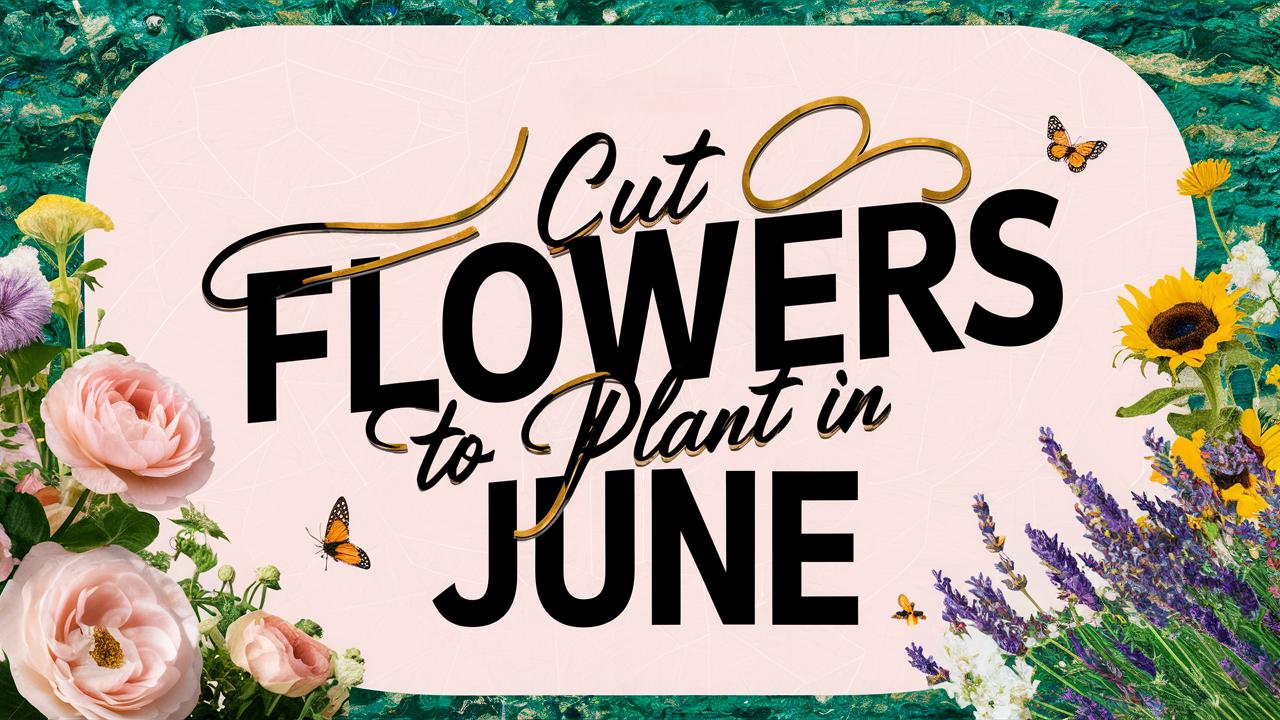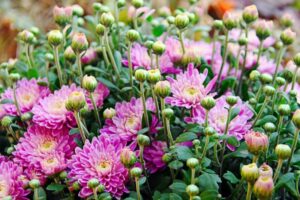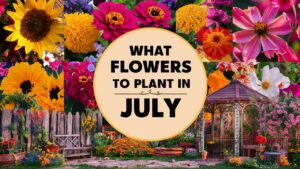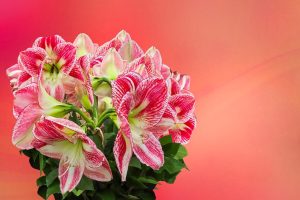As the summer season approaches, June emerges as an exceptional time to cultivate a vibrant array of cut flowers. This month serves as an invitation for gardeners to unleash their creativity and enrich their outdoor spaces with stunning blooms. Below, we explore remarkable cut flowers to plant in June, ensuring you have a colorful and thriving garden throughout the summer.
Sunflowers (Helianthus annuus)
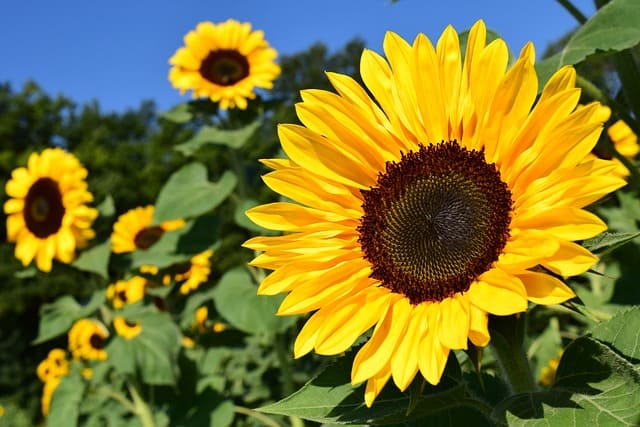
Sunflowers are iconic summer blooms that epitomize the warmth and vibrancy of the season. Known for their towering stature and cheerful yellow petals, they can grow to heights of up to 12 feet, making them excellent for backdrops or privacy screens in gardens. Sunflowers thrive in full sunlight, requiring at least six hours of direct sunlight per day.
Plant them after the last frost in well-drained soil, and consider staggering your planting every couple of weeks to enjoy a continuous bloom. Beyond their visual appeal, sunflowers produce seeds that can be harvested for snacking or bird feeding, ensuring that every part of the plant is put to good use. When cut, sunflowers can last up to a week in a vase if given fresh water and kept away from direct sunlight. Their bold appearance and happiness-inducing color palette make them perfect for brightening up any occasion.
Zinnias (Zinnia elegans)
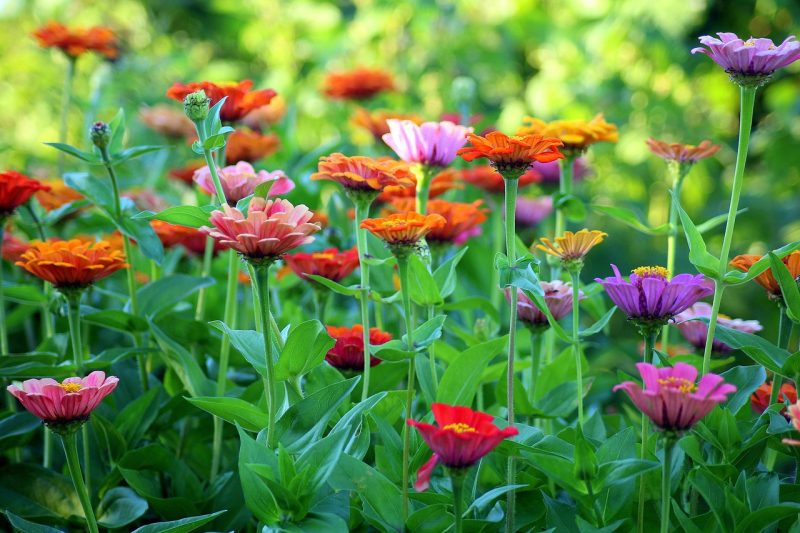
Zinnias are incredibly popular for their robust flowers that bloom in a kaleidoscope of colors, including pink, orange, red, and purple. They are renowned for their durability, making them a favorite among cut flower gardeners. Zinnias prefer sunny spots and well-drained soil, with a little extra love in the form of light watering to maintain soil moisture—especially in the dryer summer months.
Regular deadheading can enhance blooming, encouraging the plant to produce even more flowers throughout the season. Zinnias have a remarkable vase life of over a week, especially if cut in the morning when they are fully hydrated. Their bold, flat blooms make them ideal for mixed bouquets or as standalone arrangements, adding a pop of color to any space. Additionally, these flowers tend to attract butterflies and bees, serving as an excellent option for pollinator-friendly gardens.
Cosmos (Cosmos bipinnatus)
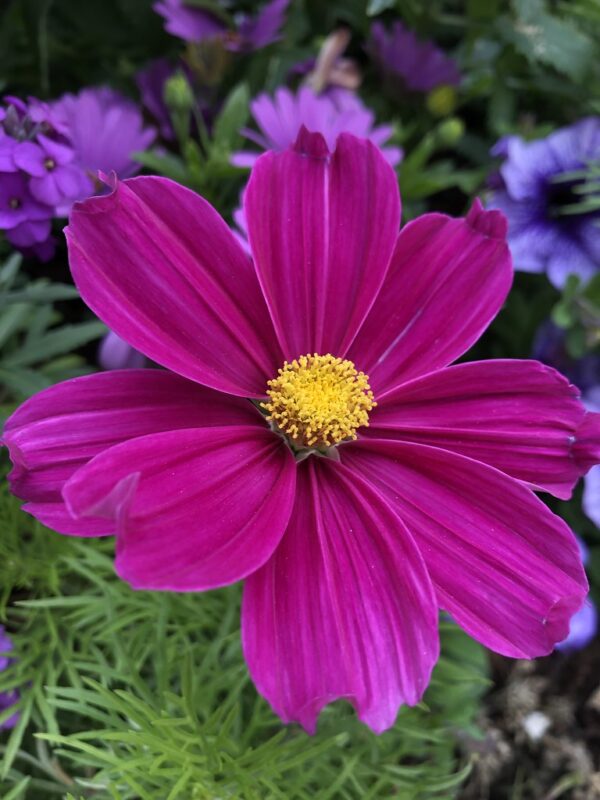
Cosmos are delightful flowers characterized by their daisy-like blooms atop long, slender stems that dance gently in the breeze. They come in various colors, including white, pink, and deep burgundy and they thrive in full sun with minimal fuss. Once established, cosmos are drought-resistant and can continue blooming throughout the summer as long as you keep cutting them.
Planting cosmos in June ensures that you can utilize their mesmerizing display all summer long. While they can grow in average garden soil, adding compost can enhance their growth. Cosmos can blend beautifully into cottage garden styles or stand out in modern arrangements. Their airy blossoms lend a delicate touch to any bouquet, and when cut, they can last for up to a week in a vase, creating light and delight in your home.
Delphiniums (Delphinium spp.)
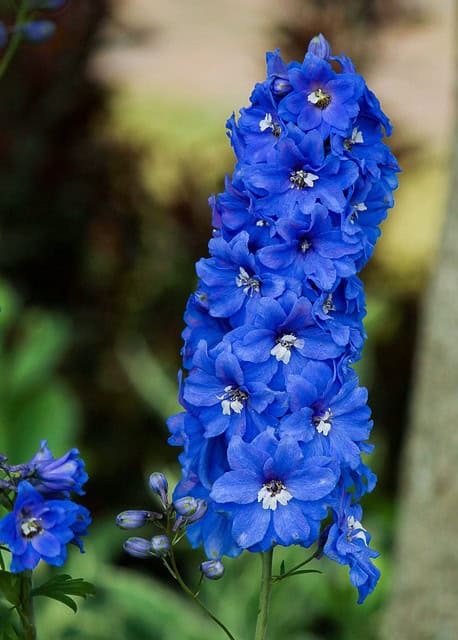
Delphiniums are truly regal plants, showcasing tall spikes of densely packed flowers in stunning blues, purples, and whites. These stately flowers can reach impressive heights and add verticality to floral arrangements. They prefer cooler climates, making mid-spring to early summer an excellent time for planting. Well-drained, fertile soil enriched with organic matter is vital for their growth.
Delphiniums will bloom from early summer into mid-summer, and by regularly cutting them, you can promote new growth as well. When harvesting, it’s best to cut the stems just when the bottom flowers are open, as this ensures that you also get to enjoy the varied stages of blooming. In an arrangement, delphiniums impart elegance and height, lasting up to ten days in vase water, making them an excellent choice for weddings and special events.
Dahlias (Dahlia pinnata)
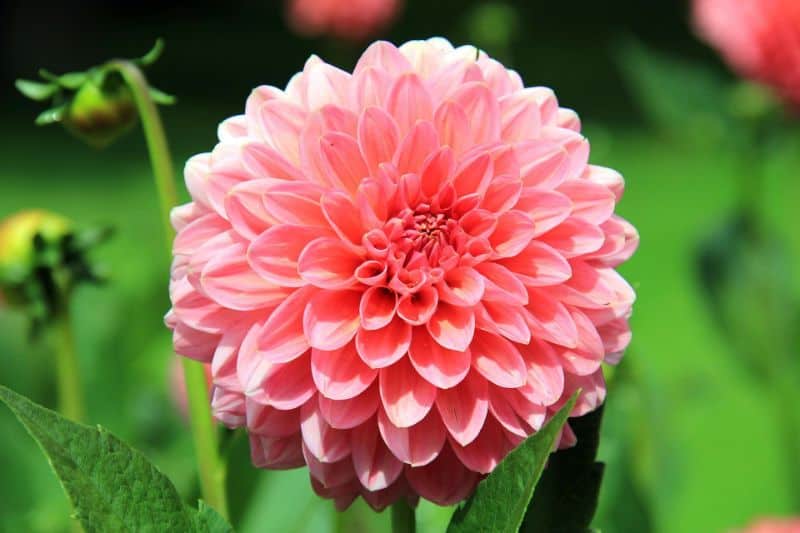
Dahlias are the ultimate flower for gardeners looking to create an exciting floral display. Known for their diverse shapes and colors, dahlias can blossom into spherical, pom-pom-like forms or open, intricate shapes. These tuberous plants prefer sunny locations with rich, well-drained soil. It is ideal to plant dahlias in June once the risk of frost has passed and the soil is warm.
To encourage continuous blooms, regularly pinching back the stems can lead to bushier plants that produce more flowers. Dahlias are surprisingly drought-tolerant, but they thrive with regular watering and occasional feeding with a balanced fertilizer. When harvested, dahlias may last a week or more in the vase and can be a central focus in arrangements because of their captivating uniqueness, making them a common pick for florists.
Larkspur (Consolida ajacis)
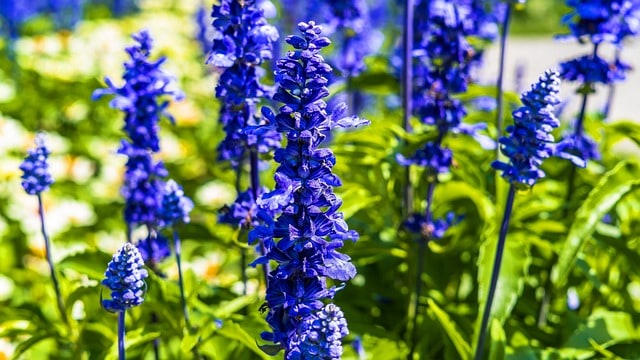
Larkspur is celebrated for its elegant, tall spikes of blooms that create a soft, cottage-garden feel. While this plant can be sown directly in June, it also tolerates cooler climates and partial shade, making it versatile for gardeners. Larkspur will germinate quickly and can provide flowers from mid to late summer.
These blooms are available in a variety of colors, including blue, purple, and white, and make excellent companions to taller plants in arrangements. Their unique shape adds dimension and softness to bouquets. Larkspur thrives on regular watering but does not stand up well in overly wet conditions. When harvested, larkspur can last between five to seven days in a vase, brightening up your space with their delicate charm.
Asters (Aster spp.)
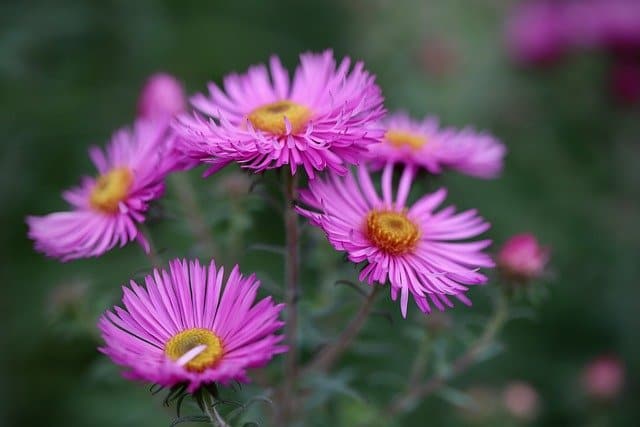
Asters are a beloved addition to late summer and fall gardens, but they can be started in June to ensure vibrant blooms in the latter parts of summer. These star-shaped flowers come in various colors and forms, allowing for lovely mixed arrangements. They thrive in partial to full sun and well-drained soil, benefiting from a little light watering during dry spells.
Asters are known for their ability to attract pollinators, including bees and butterflies, making them a wise choice for eco-friendly gardens. Their sturdy stems make them highly suitable for cutting, and they can last for up to two weeks in a vase, adding longevity to your floral designs. These flowers are particularly stunning when combined with other late bloomers, helping craft a beautiful seasonal transition in arrangements.
Snapdragons (Antirrhinum majus)

Snapdragons are charming and whimsical flowers that offer a unique snap action when squeezed, adding an interactive quality to your arrangements. With many heights and colors, they can fill various roles in the garden and in bouquets. Snapdragons prefer cooler temperatures, so plant them in June when the soil warms. They do best in fertile, well-drained soil and full sun.
When cut, snapdragons can bring a delightful fragrance to any arrangement, lasting up to 10 days in the vase. Regularly harvesting the flowers can prompt additional growth, allowing for continuous blooms throughout the summer. Their tall flower spikes work beautifully in mixed arrangements or as structural components, adding depth and intrigue to your handcrafted bouquets.
Marigolds (Tagetes spp.)
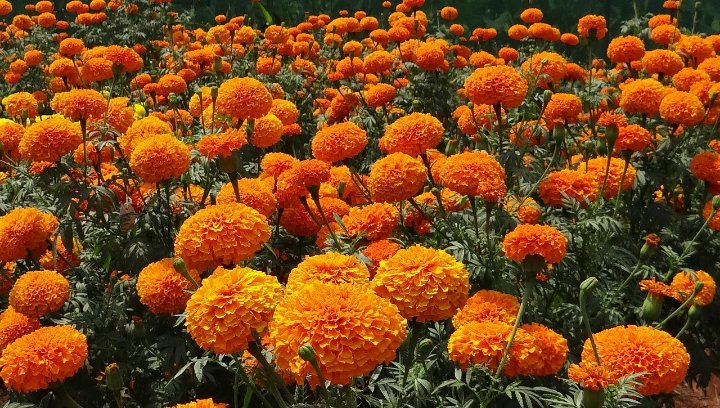
Marigolds are renowned not only for their vibrant, cheerful blooms but also for their pest-repelling qualities that aid in organic gardening. These hardy annuals thrive in sunny locations with average soil, making them an easy choice for beginners. The bright yellows, oranges, and fiery reds add warmth and life to any garden.
Planting marigolds in June ensures that they will flourish throughout the summer and into early fall. Regularly deadheading encourages more blooms and keeps plants looking fresh. When chosen for bouquets, marigolds can last up to a week in water, maintaining their bright colors and cheerful disposition. Their ability to attract beneficial insects makes them an excellent companion plant for vegetables and herbs in your garden.
Scabiosa (Scabiosa atropurpurea)
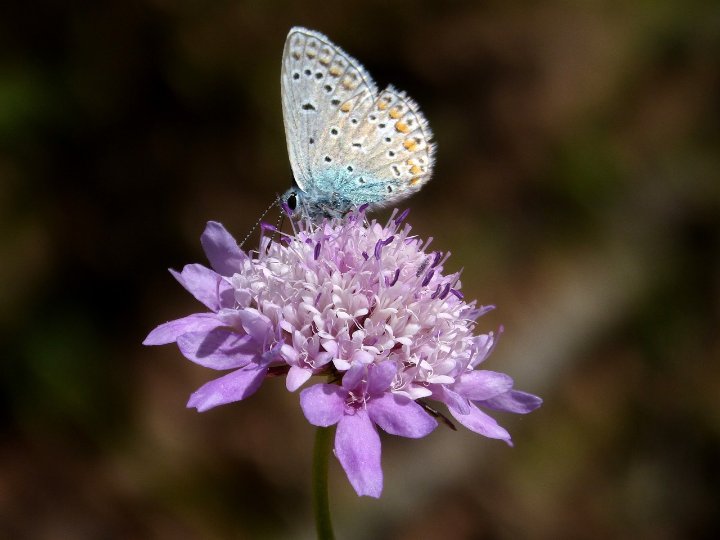
Scabiosa, often known as pincushion flowers, adds a captivating and whimsical element to your floral landscape. Featuring round blooms with unique petal arrangements, scabiosa flowers come in shades of blue, purple, pink, and white, creating delightful visual variety. They prefer well-drained soil and full sun to reach their full potential.
Planting scabiosa in June ensures a bountiful bloom cycle during the summer months. These flowers are drought-tolerant once established and can thrive with minimal maintenance. When harvested, scabiosa can last for around a week or more in a vase, making them a great addition to arrangements. They also attract pollinators, boosting garden health and biodiversity while bringing their charming presence to any bouquet.
Peonies (Paeonia spp.)
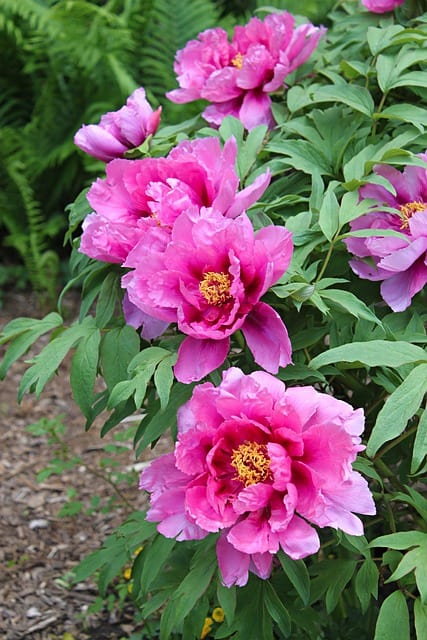
Though peonies are primarily planted in the fall, June serves as a vital time for caring for established plants. These classic flowers are acclaimed for their lush, fragrant blooms, which range from pale pastels to deep, vivid colors. Peonies thrive in well-drained soil enriched with organic matter and require full sun to maximize their blooming potential.
Once cut, peonies can last from five to seven days in a vase, enchanting spaces with their intoxicating scent and ruffled petals. Their opulent blooms pair well with other flowers, creating stunning bridal bouquets or elegant centerpieces for special occasions. Providing proper care for peonies in June can give you a delightful payoff in the coming weeks.
Sweet Peas (Lathyrus odoratus)
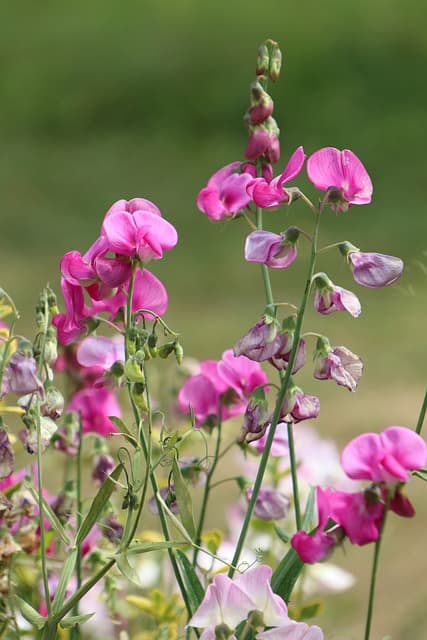
Sweet peas are treasured for their delicate blooms and lovely fragrance. They flourish when seeded in June, particularly in cooler regions, thriving in rich, well-drained soil and full sunlight. Sweet peas have a climbing nature, so providing trellis support can enhance their growth while also allowing for ease of harvesting.
These charming flowers create bountiful harvests, offering a mix of colors that can infuse garden spaces and arrangements with beauty. When cut, they can last up to five days in a vase, making them a delightful choice for foliage-rich arrangements. When planted thoughtfully, sweet peas can bring a romantic touch to your garden and a lovely scent to your home.
Gerbera Daisies (Gerbera jamesonii)
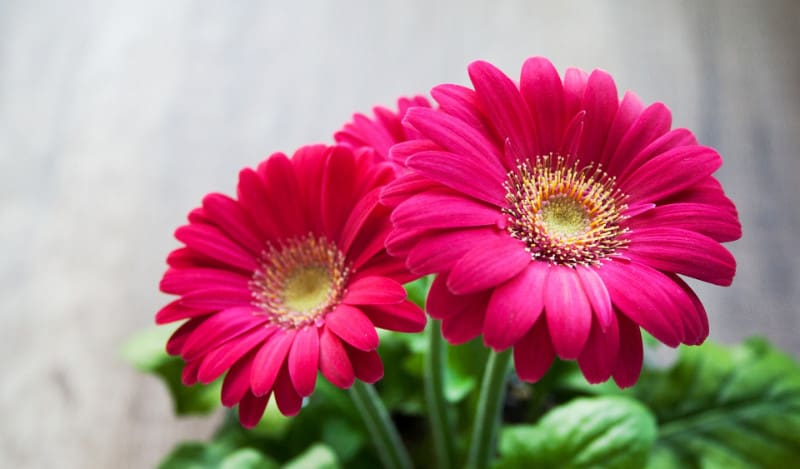
Gerbera daisies are an explosion of color, offering some of the brightest hues you can find in the flower kingdom. These cheerful blooms can light up any arrangement with colors ranging from hot pink to golden yellow. They prefer well-drained soils and need plenty of sunlight to thrive, making June an optimal planting month.
When planted in optimal conditions, gerbera daisies can continuously bloom throughout the summer. Their sturdy, strong stems allow them to stand tall in arrangements, lasting for over a week when cut. When used in bouquets, they create an impact with their vibrant colors and can be paired with a variety of flowers. Their beauty has made them a florist favorite, ideal for any occasion, from birthdays to weddings.
Lavender (Lavandula spp.)
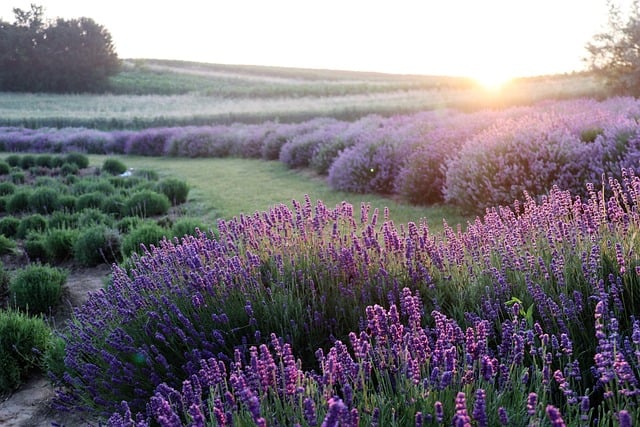
While primarily known for its elegant fragrance and culinary uses, lavender is also a stunning cut flower that adds both beauty and aroma to any arrangement. Planting lavender in June allows it to thrive in sunny conditions, preferring well-drained soil and minimal watering once established. Lavender’s evergreen foliage also adds a splash of gray-green color to your garden.
Once harvested, both fresh and dried lavender bring class to arrangements while exuding soothing aromas. Fresh lavender in a vase can last from a week to ten days, often gaining fragrance as it ages. With its versatility, lavender is perfect for creating a calming atmosphere in arrangements or as a standalone accent in a rustic bouquet, captivating your senses while appealing to the aesthetics of your guests.
Nasturtiums (Tropaeolum majus)
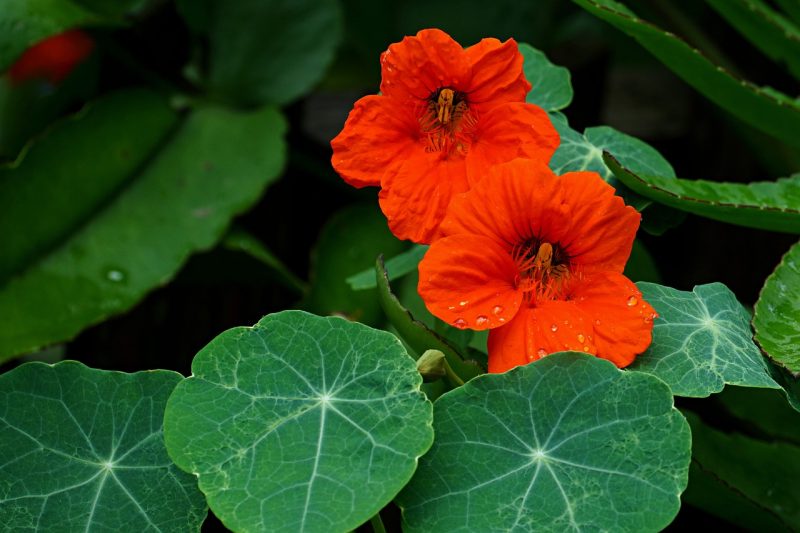
Nasturtiums are unique flowers known for their vibrant colors and peppery flavor, encapsulating the essence of summer in both beauty and culinary use. They thrive in a variety of soils, including poor soil, making them easy and forgiving to grow. Their sprawling vines can be utilized in hanging baskets or as ground cover, blooming richly from June until the first frost.
Not only do nasturtiums attract beneficial insects, but they’re also a fantastic companion plant, warding off pests from nearby crops. With bright hues of orange, yellow, and red, they can add a splash of personality to floral arrangements. Their blooms can last for around five days when cut, adding color and edible elegance to your culinary creations or bouquets.
Tips for Successful Cut Flower Gardening
As you embark on planting your cut flowers in June, consider the following tips for maximizing your success:
Soil Preparation: Ensure that you prepare your soil well by loosening it and adding compost to improve fertility.
Sunlight Requirements: Familiarize yourself with each flower’s sunlight requirements – most cut flowers prefer full sun.
Watering Wisely: Water your plants adequately but avoid waterlogging. Most flowers thrive in well-drained conditions.
Regular Harvesting: Regularly cut your flowers once they start to bloom; this encourages further growth and can lead to prolonged blooming seasons.
Pest Management: Keep an eye out for pests and diseases; using organic methods for pest control can help maintain a healthy garden without harsh chemicals.
Companion Planting: Integrate companion plants to ward off pests or enhance growth conditions for your cut flowers.
Spacing: Give each plant enough space to grow without crowding, which helps prevent diseases and enhances air circulation.
Staking and Support: For taller plants like delphiniums and sunflowers, consider using stakes or cages to support them as they grow.
Cutting Technique: Use sharp, clean tools for cutting to avoid damaging the plants. Cut in the early morning or late afternoon for the freshest blooms.
Vase Care: When you bring cut flowers indoors, refresh the water regularly and remove any foliage below the waterline to help prevent rot.


